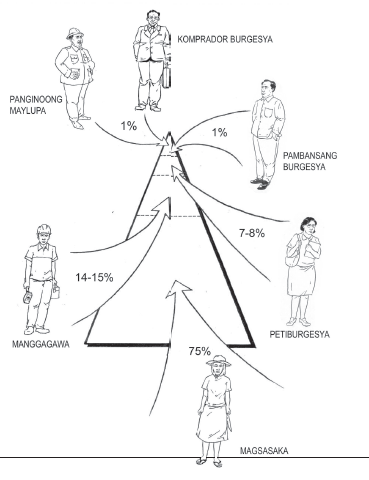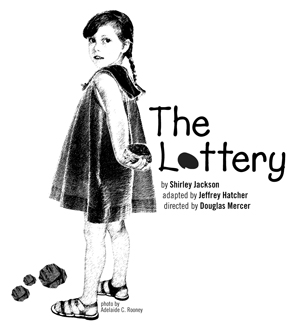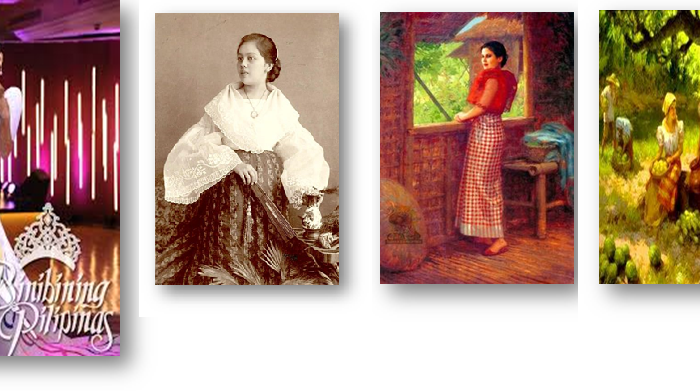In interpreting the poem The Red Wheelbarrow, we are to use the Marxist approach and criticism, but before that, let us know Karl Marx.
According to BBC History, Karl Marx is a German revolutionary communist and a philosopher. He published ‘The Communist Manifesto’ which asserts that in all histories of human race, there is a social hierarchy constituting different classes which is the source of the societal conflict and that the only solution is the proletariat’s (working class) victory. He is the proponent of the socioeconomic analysis named Marxism, which “considers that a revolutionary process that will lead to a society based on cooperation and the free distribution of goods and provision of services is necessary” (Recluse, 2013).
Having known Marx, it is evident that he believes that there is no absolute equality in the society. In the context of the Philippines, for example, there is a ruling power which only constitutes one per cent of the society’s population. Now, let us see the diagram showing the class types that make up the Philippine society.

The picture illustrates the “Social Stratification” in the Philippines or otherwise known as Tatsulok ng Lipunan in Filipino.
Basically, there is what we call the “ruling power” who are at the top of the triangle, manipulating the ones below to get as much novelty as they can. Are the names of the social classes too heavy to carry? Do not mind because our focus will only be to the class at the bottom of the triangle.
Magsasaka, when translated to English means “farmer” or “peasant.” Since the poem “The Red Wheelbarrow” contains images of objects in the farm, it is predictable how this interpretation will go like.
It is surprising that the poem, even written in the most concise manner, elicits a huge number of interpretation because of its universality. In fact, the poem was written by the American poet William Carlos Williams but contains meaning that is applicable even in the Philippine context.
In interpreting the poem’s meaning, below is a matrix that presents certain images and their colors along with the underlying meaning behind every aspect.
| Lines | Images | Colors |
| so much dependsupon | No image is presented. However, the lines give an advanced description of the subject. The subject is primarily the farmer or the farmers. In the Philippines, rice is the staple food, so the lines are parallel to the basic characteristic of the farmers. Most farmers do their job for almost their lifetime and even pass it to their offspring. There is the obvious situation of typical farmers in the Philippines—suffering from extreme poverty. Despite the fact that they suffer from poverty, they still continue farming for there is no other means of living in their situation in the province and “so much depends upon” them—the Filipinos. | |
| a red wheelbarrow | Wheelbarrow, as mentioned in the previous part, symbolizes the poor type of farmers. Poor farmers are those that neither own a land for farming nor materials to use. Why wheelbarrow? Because farmers seem to be materialized by ruling powers for giving them (1) unequal share in the land. That is, in the context of the Hacienda Luisita, farmers get only 33% of the land while the Cojuanco’s constituted the other 67%. In this situation, the farmers do not get the area of land they need for living. When will the next harvest be? Do they still have the supply of rice at that time? These questions haunt them. (2) Farmers in, for example, the Hacienda Luisita, are payed 9.50 pesos per week (Bayan U. S. A., 2010). Will this be enough for their daily expenses given that some families in the province are of large sizes?
In this way, the image is the complete opposite of personification—it ismaterialization. The farmer, representing his fellow farmers, is being materialized since the treatment to them is inhumane. |
Red symbolizes the revolutionary nature of farmers. Many farmers in the Philippines are victim of feudalism and other forms of exploitation. As farmers experience more and more of these, they tend to be militant, for they see no other means of escaping to their situation. Revolutionists are called the “Pulang Hukbo” or “Red Army.” To sum it up, red symbolizes the farmers’ militant nature. |
| glazed with rainwater | The wheelbarrow, being glazed with rain water,symbolizes the farmers being cleansed, being new. On the onset of the farmworkers’ life, they lack the knowledge of their situation. In the later time, farmers receive new knowledge about their situation, who directly and indirectly exploits them, and how they were exploited. Since farmers are now knowledgeable of their context, they tend to do “pagpapanibagong hubog” as a means of changing their perspective and do necessary actions to mitigate their situation. The dusts in the body of the wheelbarrow are then washed away, bringing out its new image.
Rain water may also be associated with what the farmer have for eating. Since farmers experience having lack or no supply of food at all, there are instances when they boil stones with water and use its broth as a soup. A wondering mind might ask: “What will they get from it?” or “Is it safe to eat that kind of food?”
Rain water, as mentioned in the first paragraph, symbolizes knowledge. What if the wheelbarrow becomes full of water? What if their knowledge is enough or even exceed their capacity? These will be addressed in the interpretation of last two lines. |
Water is generally depicted as blueand blue symbolizes grief. Farmers feel the melancholy of being victims of the system. They are frustrated for not being able to give the needs, even the primary needs, of their children—education and health—and household. As farmers of the old times, they are just passive, responding to their situation with mere pity on themselves. |
| beside whitechickens | Chickens often get food on every surface they pick. Chickens are like rich countries. One of them is the United States. The US had much wealth that they can get. Similar to Morton’s (in Sales, 1992) analogy, when a glass is already full of water, one finds another glass to fill. If the US had no longer space to put its wealth in, it has to search for another storage. One of them is the Philippines. Since US is the imperialist of the Philippines, it took advantage of its natural resources to create more wealth as they do not stop making as much money as possible.
However, there is the word “beside.” This signifies that the US imperialist directly affects the farmers in terms of (1) export, (2) mining, and (3) militarization. (Gonzales, 2016). Farmers are affected by the idea that the Philippines is export oriented but is import dependent. Farmers produce raw materials including spices, rice, and other goods. They are being exploited because the good they worked hard for are sold for the cheapest price but are processed in another country to be sold as an expensive finished product, which, farmers cannot afford. For example, they make cocoa but they do not get to taste imported chocolates. Chickens may eat the plants farmers had planted, but will give fertilizing solid waste in return. Mining affects the farmers when they dig too much for mineral resources and tend to destroy the land farmers plant their seeds. It is as if chickens look for worms under the healthy soil, distorting the arrangement of plants. Lastly, in militarization, US troops are settled to stay on lands used for farming. The analogy goes like: the land intended for planting is used as chicken’s poultry. US militaries will soon die during wars, just like chickens in the farm that are meant to be slaughtered soon.
Addressing the question, the wheelbarrow becoming filled with water means the revolution has already started. The farmer has known enough about his situation and about how to respond to it. He then spills out, like water, the knowledge he has and in turn, repelling the chicken. This is a manifestation of how revolution works. |
White symbolizes the American imperialists aiming for more wealth. However, this does not necessarily mean that Filipinos should hate all Americans. It is the system that people should be against, not the ordinary people. (Gonzales, 2016) |
The poem “The Red Wheelbarrow” is such a universal text. It can generate a bunch of interpretations and it is surprising that it even matches with the Philippine context of farmers experiencing exploitation from ruling powers. The colors embedded to the images not only make the full picture vivid and alive but also add to the meaning and emotion in every lines.
References:
Ayroso, D. (2015) Mining Act: 20 years of mining plunder, pollution and destruction must end. Retrieved from http://bulatlat.com/main/2015/03/03/mining-act-20-destruction-and-pollution-must-years-of-plunder-end/#sthash.8uldzBQ1.dpuf
Bayan U. S. A. (2010). US-funded Oplan Bantay Laya must end.Retrieved from http://bayanusa.org/us-funded-oplan-bantay-laya-must-end/
British Broadcasting Corporation. Karl Marx (1818 – 1883).Retrieved from http://www.bbc.co.uk/history/historic_figures/marx_karl.shtml
Gonzales, J. M. (2016). Lipunan at Rebolusyong Pilipino. Personal Collection of J. Gonzales. Philippine Normal University, Manila, Philippines
Ocampo, S. C. (2014). Hda. Luisita massacre: No justice after 10 years. Retrieved from http://www.philstar.com/opinion/2014/11/15/1391859/hda.-luisita-massacre-no-justice-after-10-years
Recluse, A. (2013). The basic principles of Marxism – Critique Sociale. Retrieved from https://libcom.org/library/basic-principles-marxism-critique-sociale
Sales, G. (1992). Jazz: America’s Classical Music, p. 57.
Image Source:
Pambansang Demokratikong Paaralan. (2005). Maikling Kurso sa Lipunan at Rebolusyong Pilipino. 3rd ed. p.18.
Blog reposted from https://literaryblogblog.wordpress.com/2016/07/30/digging-in-to-the-words-a-formalist-and-marxist-view-on-the-red-wheelbarrow/


